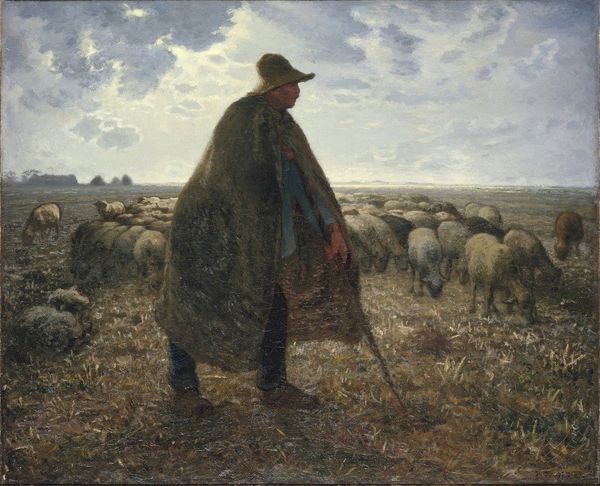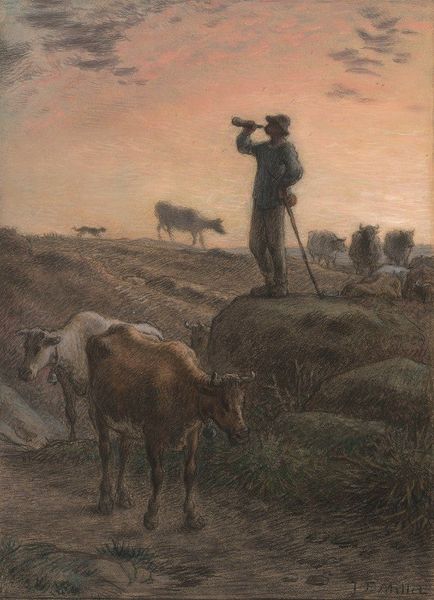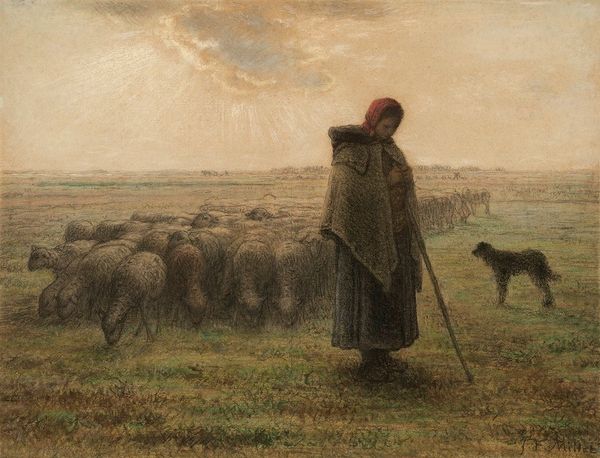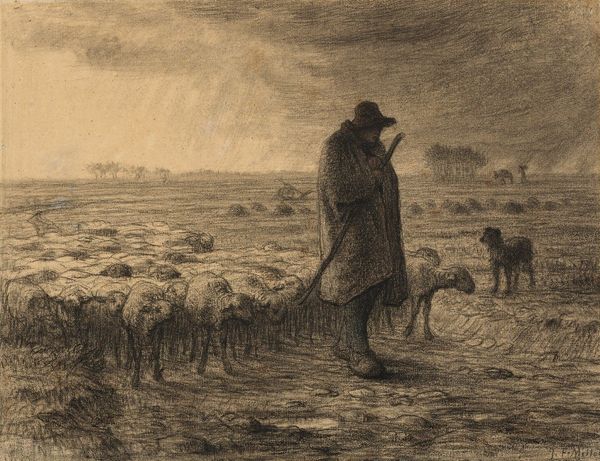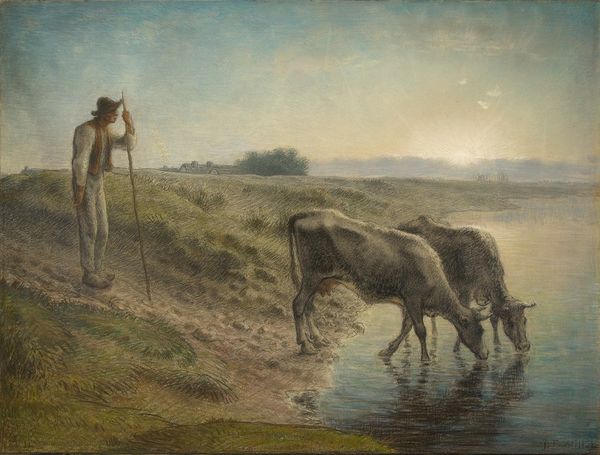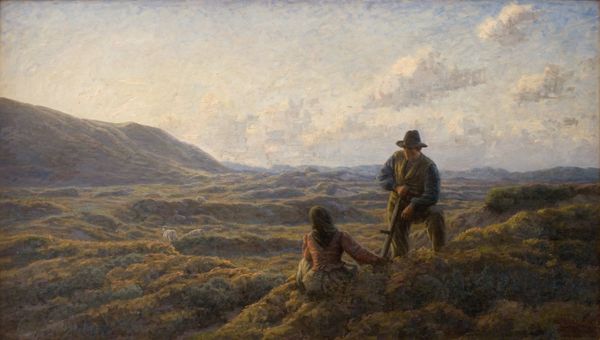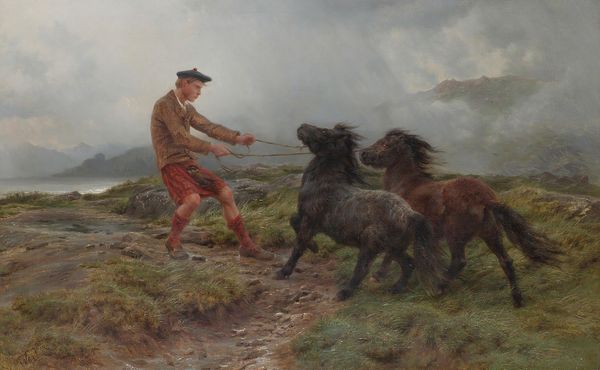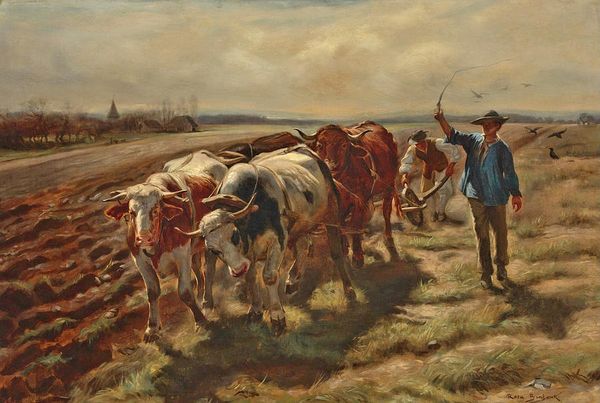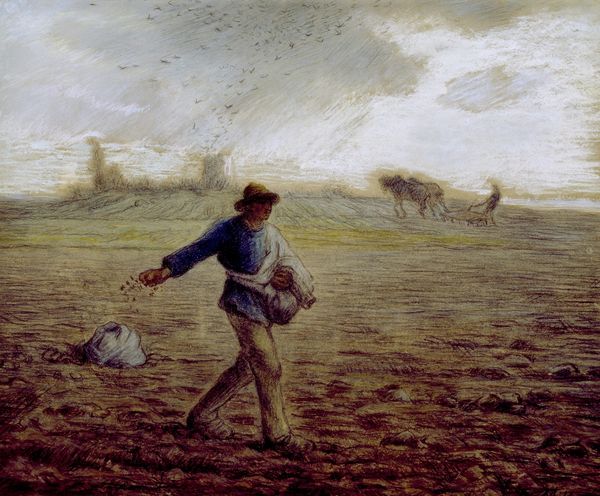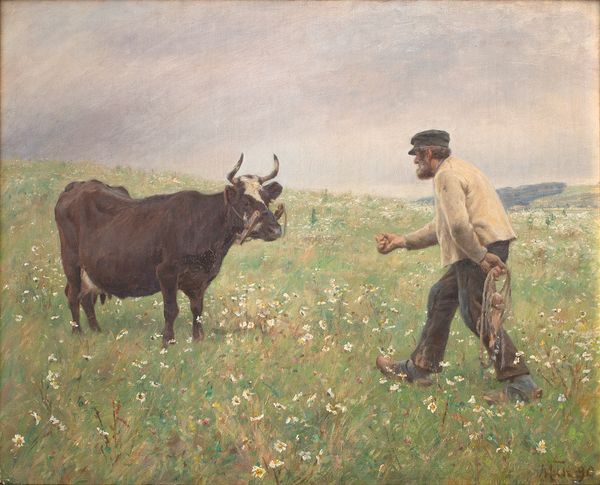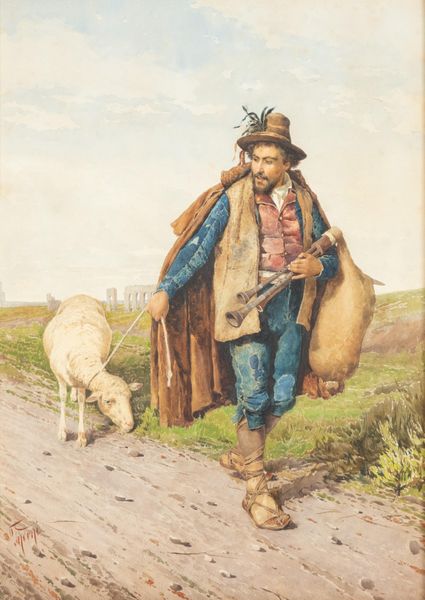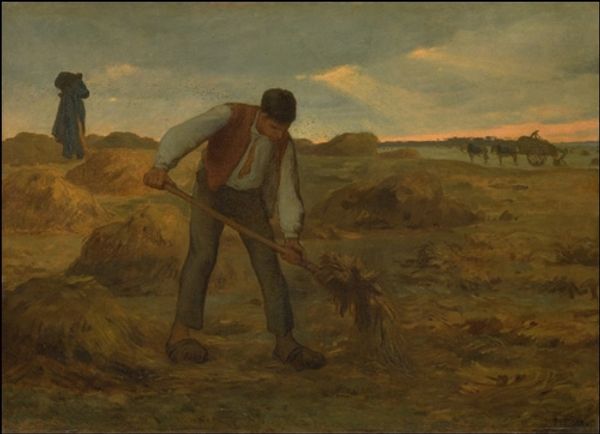
Copyright: Public Domain: Artvee
Jean-François Millet created this artwork, called "Berger gardant son troupeau," in France, though its exact date is unknown. Millet was known for depicting rural life and peasants. Here, the shepherd and his flock might at first seem like a nostalgic scene. However, it's important to remember the social context of 19th-century France. The Industrial Revolution was drawing people to cities, disrupting traditional agricultural life. Art institutions like the Salon often favored grand historical or mythological scenes. Millet's focus on the everyday lives of rural laborers was a deliberate choice. This artwork creates meaning through its muted tones, emphasizing the harsh realities of peasant life. The shepherd's stoic figure suggests a connection to the land, but also hints at the social and economic challenges facing rural communities at the time. To fully understand this artwork, we can consult historical records, agricultural studies, and writings about the art market. The meaning of this image is shaped by the culture and institutions in which it was made.
Comments
No comments
Be the first to comment and join the conversation on the ultimate creative platform.
